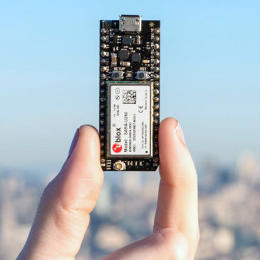Why The internet Of things Hasn’t long past cell yet
at some point that Particle CEO Zach Supalla envisions, you’ll never lose your luggage, or to find out too late that your basement is flooded. manufacturing strains will acknowledge precisely when a single piece of apparatus is about to fail, and city staff will automatically get notified when a garbage can wants emptying.
That’s as a result of every the sort of units will be related to the internet, despite whether there’s a functioning Wi-Fi network within range. Particle is in the industry of constructing the instruments that permit these “web of things” devices, from circuit boards to device structures to very large-scale manufacturing plans. the company’s newest product, the Electron, is the first to have a cellular radio and data plan inbuilt.
Getting thus far hasn’t been easy, on the other hand. For Supalla, the advent of Electron has been a lesson in how wi-fi carriers work, together with both their networks and their internal politics. With the first Electron devices delivery this week, I talked to Supalla about what he learned, and what still desires to vary ahead of cellular IoT takes off.

wireless Carriers Don’t Do Small-Scale
The web of things isn’t (but) an incredible trade, and the idea that favors lots of small-scale units, fairly than a handful of hits. Certifying, provisioning, and managing data plans for all of those devices is a tall order for wireless carriers, who are used to selling smartphones via the million.
“There are plenty of in reality fascinating consumers available in the market that they would really like to strengthen,” Supalla says, “but they’re simply not constructed to strengthen smaller companies, and interestingly their definition of a smaller firm can be reasonably large.”
Naturally, Supalla hopes that carriers might be drawn to aggregators like Particle, which will negotiate one-dimension-suits-all knowledge plans on behalf of many startups. If Particle ships Electrons to 10,000 firms which can be constructing IoT units, and people shoppers in flip ship lots of Electron-primarily based products, carriers get to scale their web of issues industry without a lot extra effort.
the info Plans Aren’t ideal
In negotiating with wi-fi carriers, Supalla has learned that outdated habits die laborious, and he acknowledges that Electron’s data plan—which consists of a $three month-to-month charge and $1 per megabyte overage costs—was one thing of a compromise. (Particle acts as a cell digital community operator, working with a worldwide carrier that has agreements with AT&T and T-cellular in the U.S..)
“it’s so baked into their DNA, this monthly plan,” Supalla says. “Even us getting a plan where we did not have a contract associated with it—i discussed we can droop our SIMs and un-droop them—that was arduous to negotiate. They actually failed to want to provide that up.”
Carriers are insistent on monthly plans, Supalla speculates, as a result of they’re afraid that any exceptions they carve out for internet of things units will jeopardize the smartphone plans at the core of carriers’ trade.

“every time you create one thing that’s cheaper for an IoT software, you’re going to have a bunch of smartphone firms which might be going to assert, ‘hey, I noticed what you probably did there, and if you are able to do that, then one thing’s unsuitable with our contract,’” Supalla says. “and that’s in reality risky for a carrier, if your entire different partners come to a decision to renegotiate.”
which is not to say carriers had been utterly uncooperative. for instance, as a cost-saving measure they’ve instructed reducing data rates all through off-top instances, which makes a lot of feel for IoT units whose transmissions are not pressing. nonetheless, Supalla believes web of issues devices might keep in touch otherwise than smartphone information altogether. He points out that for normal status messages, Electron units could easily use the identical protocol that textual content messages rely on currently, and it could be quite a bit more cost-effective for everyone. however again, in discussing this with carriers, Particle ran into what gave the look of institutional reluctance.
“In idea, every single party would advantage, however that is not how they charge,” Supalla says. “They charge dear charges for text messages—absurdly expensive, it can be like back to ’90s textual content-message pricing—and i might like to peer that vary.”
The Hardware is too dear
it may be glaring that web of issues hardware must turn out to be smaller and more cost effective to reach ubiquity. but what’s much less evident is where those prices actually come from.
In mobile, a big chunk of the hardware price comes right down to intellectual property. every time Particle sells an Electron, for example, the maker of the instrument’s cellular modules has to pay a licensing rate to Qualcomm, which owns a major number of patents for 3G and LTE radios. A $20 IoT tool can have a tougher time absorbing those fees than a $600 smartphone as a result of a lot of the ultimate price goes towards licensing.
“the identical kind of factors which might be taking place on the plan facet are taking place on the hardware facet,” Supalla says. In other words, if Qualcomm lowered its fees just for small-scale gadgets, phone makers would possibly complain or try to make the most that device to get away with paying much less.
fortunately, this downside may get solved over time. As LTE gets sooner, telecommunications groups have agreed on a spread of “classes,” each with their own limits on transfer speeds and simultaneous transmissions. The hope is that licensors could dial their charges up or down in line with these categories, and internet of things devices would sit on the low finish. “these are one of the vital considerations that kind of need to get worked out, to change into really available for a lot of different products,” Supalla says.

it’s nonetheless Early Days
The final time I spoke with Supalla, he likened nowadays’s web of issues units to the broader internet of the Nineties. just as plenty of people doubted the internet’s transformative power back then, at this time it’s hard to fathom the impact—each just right and unhealthy—of giving an internet connection to virtually the rest.
If this analogy holds up, the actual transformation will occur as soon as these units are untethered from a local community, similar to how smartphones resulted in an explosion of web-primarily based applications. The makers of these merchandise may even face the identical hesitation from wi-fi carriers that Steve Jobs and Apple confronted as they tried to ship the primary iPhone.
but Supalla is positive that carriers will see the light, especially as income growth from smartphones starts to dry up.
“I do assume those market prerequisites will drive them to make IoT work,” he says.
(25)













